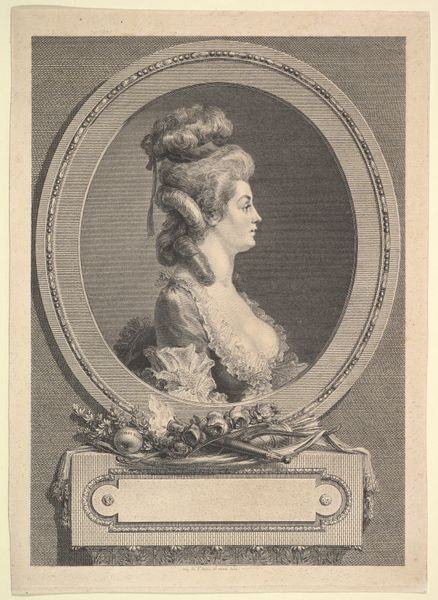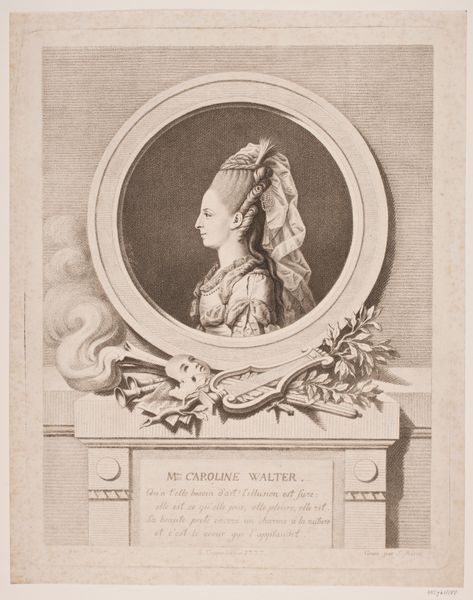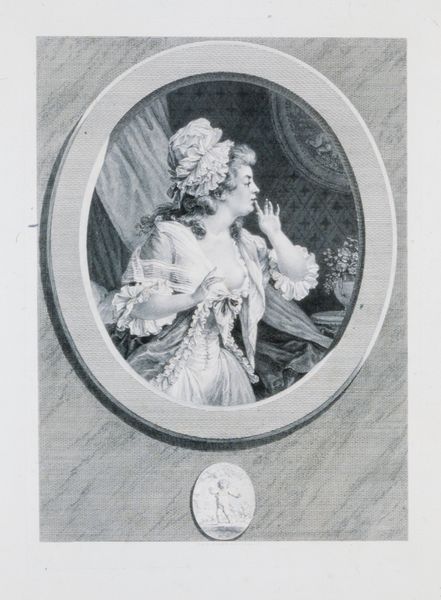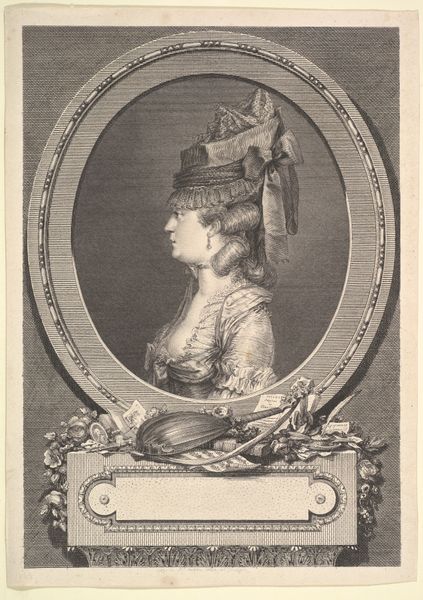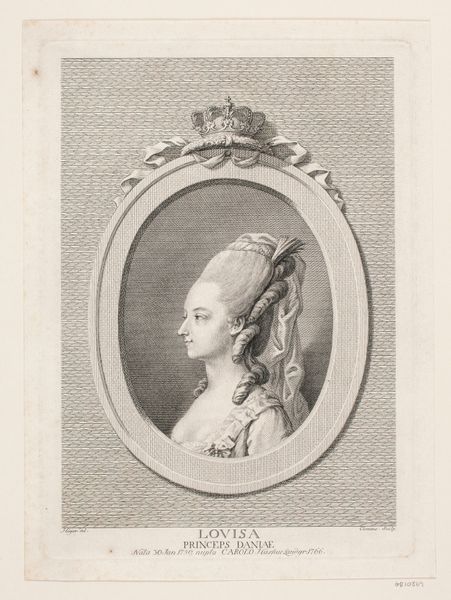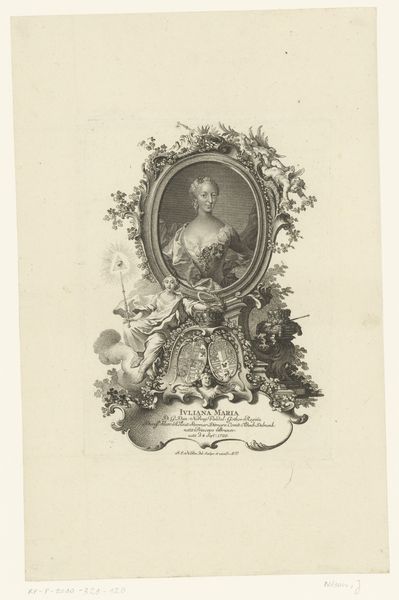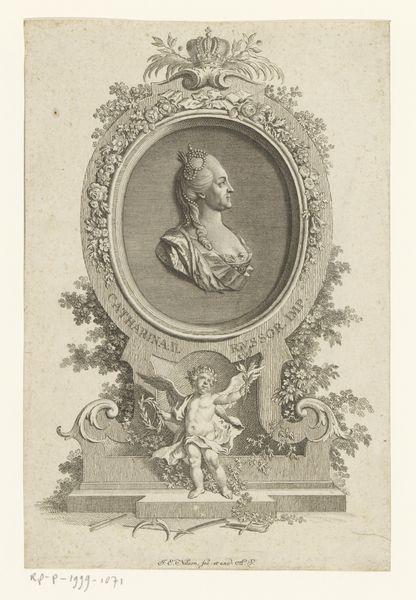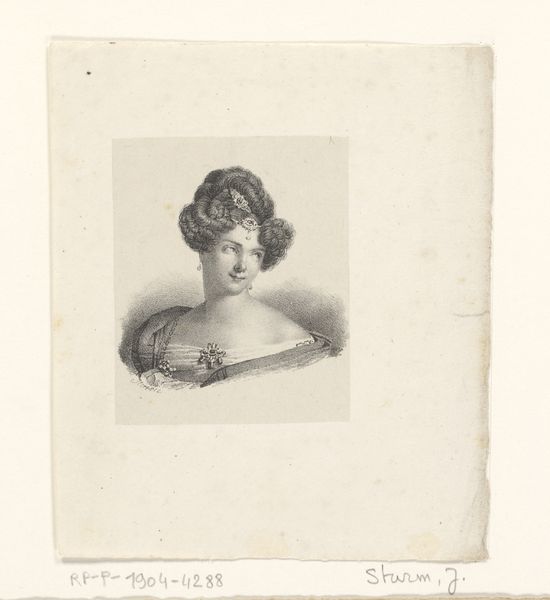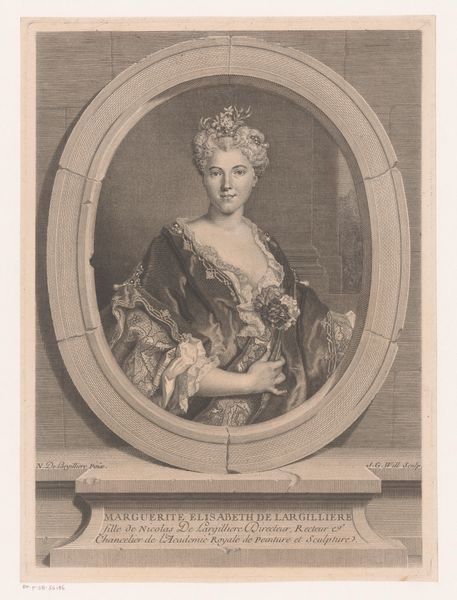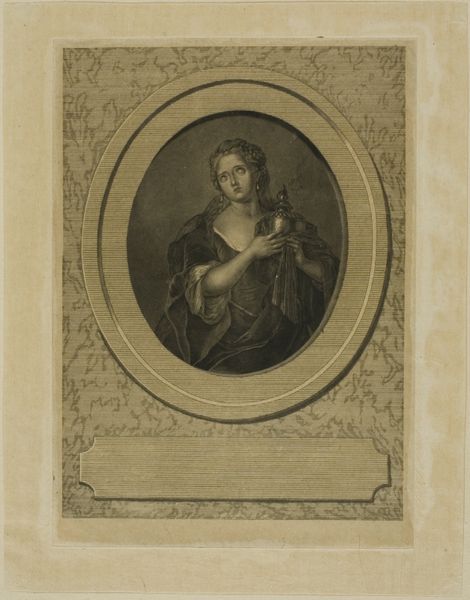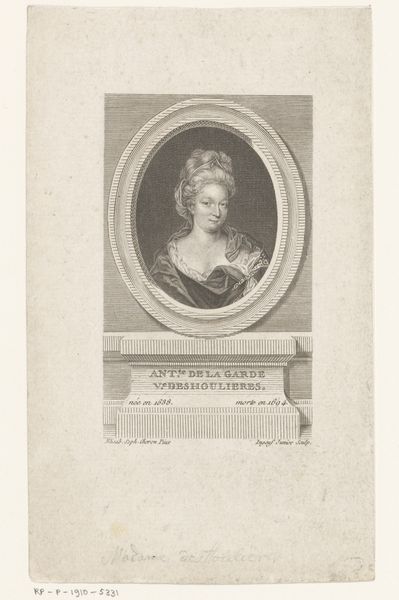
Dimensions: 10 x 7 1/8 in. (25.4 x 18.1 cm) (plate)11 7/8 x 9 1/8 in. (30.16 x 23.18 cm) (sheet)
Copyright: Public Domain
Curator: We’re standing before a piece called "Louise Emilie- Baronne d’Andlau," a portrait created in 1779 by Augustin de Saint-Aubin. It's an etching and engraving, a print held at the Minneapolis Institute of Art. Editor: It’s immediately striking how composed and serene it feels. The delicate lines create a sense of formality, but there’s an undeniable elegance in the composition as well. The oval frame within the rectangular print isolates the woman. Curator: The oval portrait, a classical motif, immediately harkens back to Roman imperial portraiture – reinforcing the sitter's position within a refined social hierarchy. Notice the attention to detail in her hair, styled high – a symbol of the era's excess and status. Editor: Yes, the hair dominates! It's practically another character. The artist’s lines so carefully sculpt its form. See how the line emphasizes volume? And below it, the ornamentation - the floral arrangement beneath her portrait - mirror each other, establishing a firm vertical axis. Curator: The arrangement does underscore the idea of fecundity. She isn't just an individual but a representation of lineage. Women of nobility carry a great deal of cultural meaning, they embody both the present and the future, particularly within aristocratic France. She carries the emotional and economic inheritance. Editor: That's an astute observation. Though Rococo leans into frivolity, Saint-Aubin organizes everything with neoclassical control. Observe the restrained elegance: no extravagant gestures. Every element contributes to the balance, especially the contrasting textures in her lace and coiffure. Curator: The text below the portrait confirms our sense of social coding at work. This line "L'Amour en la voyant crut voir la mere un jour / Et tour ce qui la vou a les yeux de l'Amour" translates to something like, “Love, on seeing her, believed he saw a mother one day, and everything he desires is within her gaze." This reinforces the subject's value. Editor: Absolutely. The textual inscription anchors the image further, enriching our formal and conceptual experience. I admire Saint-Aubin’s sophisticated grasp of semiotics. This work presents us a woman aware of her cultural image. Curator: Seeing this portrait, I reflect on the cultural narratives we choose to memorialize. I think we gain insights into values both lost and perhaps found again by looking back at these moments in time. Editor: I’m leaving this portrait newly struck by Saint-Aubin’s skillful modulation of light, shadow, and symbolism. Each time I view this portrait I am certain it shows us there’s always more to discover in the smallest details.
Comments
No comments
Be the first to comment and join the conversation on the ultimate creative platform.
